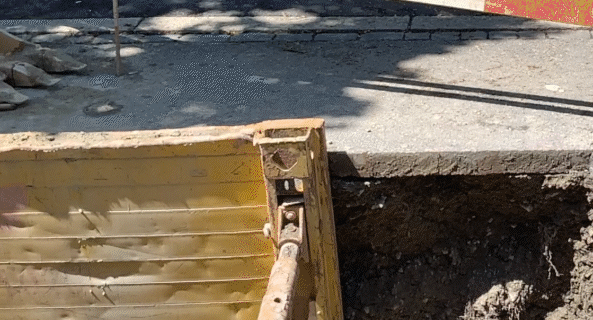Get started with your scanning kit - English
Other languages coming soon
This article will guide you through how to get started with your scanning kit, which includes setting up your hardware and software, documenting your project, visualizing points in augmented reality (AR), visualizing a PIX4Dcloud project in AR, volume computation and getting training.
Setup
- Activate your PIX4Dcatch
 license (received via email) with your Pix4D account.
license (received via email) with your Pix4D account. - Download and install the app on your mobile device.


- Open and log in using your Pix4D account.


- Choose your device and attach it to your mobile device with a SPC case and your handle.

- Enter your NTRIP provider details and login credentials.

- Validate the NTRIP connection
- Choose your preferred mountpoint.

- Set the NTRIP coordinate reference system according to the specifications of your NTRIP provider

[for example, EU: ETRS89 | US: NAD83(2011), Japan: JGD2011]. NOTE: This is not the output coordinate reference system, which can be selected later.
Once the hardware and software are set up, there are several potential workflows:
Capture and process data
- Start capturing your dataset!

- Upload the results to PIX4Dcloud or export the data to your computer for desktop processing with PIX4Dmatic.

Advanced Workflow
- Before capturing images, distribute Pix4D Autotags across the project area.

- Measure the points with PIX4Dcatch and your RTK device to create a point collection.


Visualizing points in AR
- Import or measure a point collection with PIX4Dcatch to visualize AR points

- Open the Tools menu


- Activate AR Points


- Select the desired Point Collection

- Move around the scene until the markers appear
- Explore or capture your project area with PIX4Dcatch AR Points
Visualize a PIX4Dcloud project in AR
- Open the Tools menu

- Activate PIX4Dcloud AR

- Select the desired PIX4Dcloud project

- Visualize the reconstructions, annotations, or design files associated with the PIX4Dcloud project

Volume computation
-
Capture the scene which contain the volume to be computed with Volume computation feature

-
Select Volume Computation on the project view

-
Define the base of the volume by manually adding points

-
Compute the volume

-
Export the results as a PDF report


Get training
The PIX4Dcatch online courses are specifically designed to take you through the main workflows for capturing, processing, and analyzing your data.
Contact us to get enrolled in our training. If you purchased a scanning kit, your whole team can be enrolled for free!
User guide
-
Get started with terrestrial scanning: This guide offers a comprehensive overview of terrestrial scanning, walking you through the key steps and best practices to ensure accurate and efficient data capture.
-
User guide for your RTK handle: This manuals provides detailed instructions on how to properly attach, configure, and use your RTK antenna handle with your scanning equipment, ensuring optimal performance during your projects.
- Badelf
- Emlid
